Hi Luis, I am in the very north, in the Parque Nacional de Peneda Geres, near Arcos de Valdevez.
And Hi Marco from Huertasurbanas. Thank you so much for your recommendations! I actually follow your Youtube channel and there are many Eugenia's I would have never found out about without you posting about them. Your foodforest is also a very interesting project! I am anxious to see how that will turn out. In my experience the planting out of seedlings in the field is the most delicate procedure...
The summers in Portugal are all as dry as in the graphic - until you book two weeks of a camping-holiday over there :-) - my sister did that and then she got ten days of rain

I am for now doing exactly what you suggested: I have here in France a small collection of seedling Eugenia's: Pitangatuba, Grumixama, Cherry of the Rio Grande, Candolleana, Pitanga and Guaviyu. I also have Jaboticaba's: The 'normal' one from Oscar, the hybrid and last year I got the Delicatula from Helton... Since I grow them all in pots in a climate that is not ideal, I seem to have a bit of a different experience than most of you. For me the M. Delicatula is by far the healthiest and easiest to grow.... It is incredibly tolerant of alkaline water, soil, small pots, sunshine, cold, dark winter conditions, etc... Most of my plants are from seeds of Oscar. I have also last year ordered a couple of batches of seeds from Helton, but they had a hard time surviving the mail to Holland - most seeds were available in my winter or summer and either got fried or frozen in the mail... But I have two Campomanesia's that survived... I think one is Xanthocarpa littorale and the other I am not sure of.
I have found several Feijoa cultivars here in France, and figs as well, but these take the winters here, as long as I keep the snow off of them.
Guavas do very well in pots, but all the ones I planted out died. I think they are too tender for my area. I have found a larger strawberry guava on the local market in Portugal and planted that one two years ago. It didn't grow much so far, but is still alive.
Pawpaw and Pecan are also in the ground there, and so far these are doing great.
The soil is very good for Eugenia's, the ground is very rocky, and drains extremely well, with not a lot of quality organic matter in it, except on the terraces - these have been filled for over a couple of hundred years with cow dung... I tried to create a pond and some swales on these, but the ground it so well-draining, that it does not really hold the water well. Still, I think it is worth a try. I know of Sepp Holzers farm, it's awesome!
Here is what my 'garden' looks like in France:
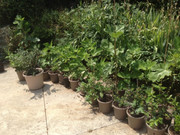
Adam, the hut is absolutely crazy! It is the reason I fell in love with the place. It is over 400 years old and not in use anymore. People never used to live in these huts, you can find them all over the higher regions in these mountains. The way societies were organized in the past was less around 'individual property' and most villages are in the lower valleys, but when they went up in the mountains to see their cattle, the trip was often long and so they built these shelters all over the higher plateaus, just to spend the night... most of them are owned by 'nobody' or the community as a whole. There are even entire villages of them... All abandoned now. I was lucky to find one on a piece of private land. It's about 3 x 4 meters on the inside. Sheperds would overnight in there, together with the smallest calves, to protect them from wolf attacks...
The inside when I bought the place...

And this is how it looks now:
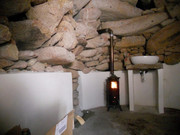
You should absolutely build your own one day!

Greenman, You are welcome to come and visit once I finished work on the hut! I seperated the terrain in areas for 'drought tolerant' species like mulberry and Feijoa, and keep the spots that retain most moisture for the Eugenia's. Longan and Lychees that I planted didn't survive, I don't know wether it was the drought or cold that killed them... It sounds like you can grow a little more heat loving plants than I do.
Hi Miguel, Yes, I wondered wether you were the same Miguel from Cloudforest. I am totally in awe of your collection! Great to see you here again. Next time I am in Portugal I hope it will be possible to visit you and maybe see your plants! That would be fantastic.
Hi Treefrog, I was amazed by the diversity of seedlings in Avocado. It is a really satisfying plant to experiment with. I saved up seeds in the fridge for a year and planted out over a hundred of them. Actually a lot - almost 50% survived the first winter there, and quite a few also survived the summers. I grow them on site as rootstock for now, and I am not sure if any of the cultivars will ever make it, but a lot more trees then I expected survived. The ground is very well draining, so that is good for them. The neighbours know of one large tree in the region, but they don't know wether it fruits...
The trees in the ground are about three years old now, so next year I will see if I can start grafting them over to known varieties...
Thanks for all your replies!


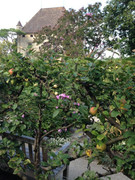
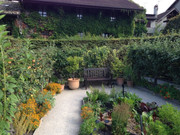
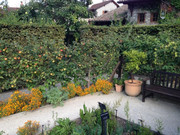
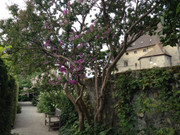




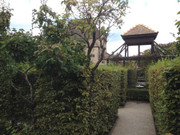









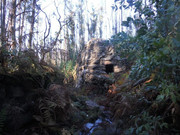
 This approach seems to be working for avocado and macademia, Feijoa and tea-plants, as well as a single mango (!) while at the same time so far no Lychee, Longan, Grumichama, Black Sapote, Cherimoya, or Eugenia raised from seed has ever survived... But I don't give up easily and am now focussing on Myrtaceae that could maybe handle a 9a-climate.
This approach seems to be working for avocado and macademia, Feijoa and tea-plants, as well as a single mango (!) while at the same time so far no Lychee, Longan, Grumichama, Black Sapote, Cherimoya, or Eugenia raised from seed has ever survived... But I don't give up easily and am now focussing on Myrtaceae that could maybe handle a 9a-climate.
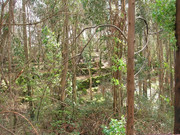
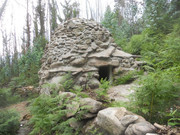
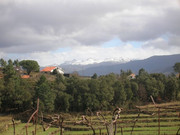
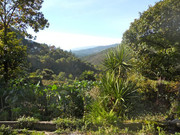

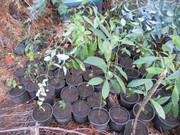
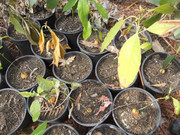
,myrtaceae are often easy to grow and very beautiful plants, I grow lots of them and almost all will do it fine in 9a climate, the hardier ones are feijoa, guaviyu, ubajay, surinam cherry, uvaia, sete capotes, cerella, red strawberry guava, araçá da serra, maybe ñangapiré negro, some jaboticabas... and I am missing others... for sure.